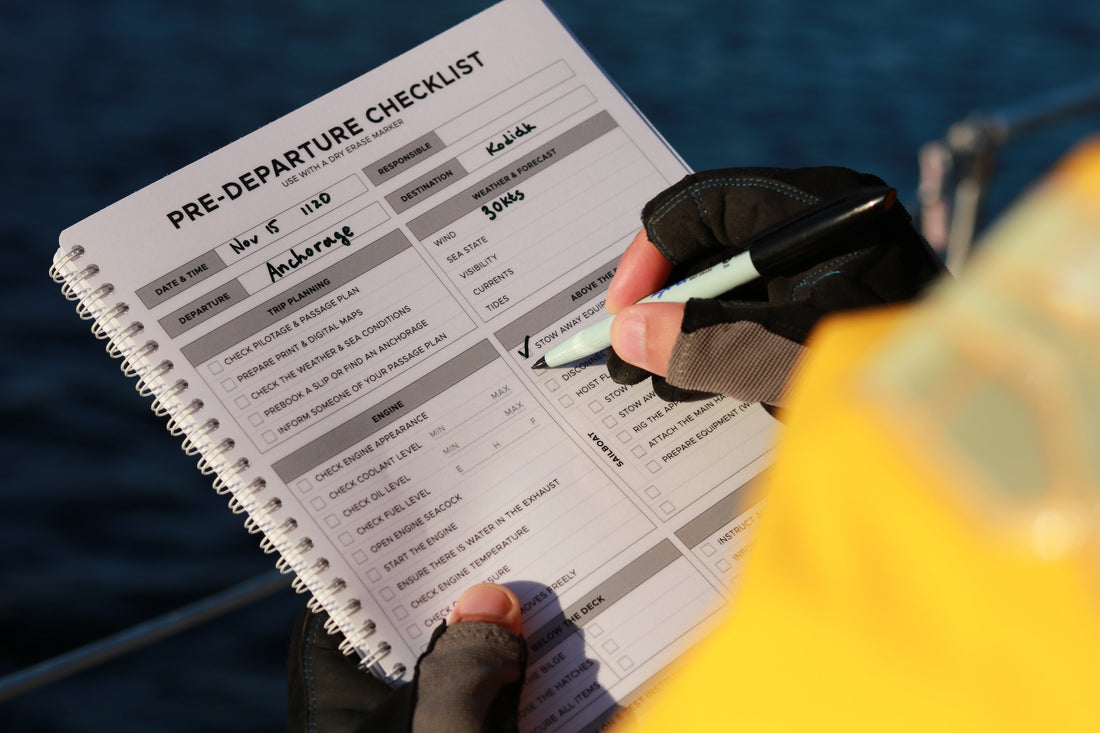When it comes to sailing, preparation is key. One crucial aspect of preparation that should never be overlooked is the use of sailing checklists. But why are sailing checklists so important? Let's delve into the reasons why these sailing checklists are essential for a successful and safe sailing experience.
Ensuring Safety
One of the primary reasons why sailing checklists are crucial is that they help ensure the safety of everyone on board. By making sure to go through a checklist before heading out, sailors can double-check that their boat is shipshape and all safety measures are good to go.
Preventing Mistakes
Even the most experienced sailors can make mistakes, especially under pressure or in unfamiliar waters. Sailing checklists act as a safeguard against human error by providing a step-by-step guide to follow. By checking off each item on the list, sailors can ensure that no crucial steps are missed, reducing the risk of accidents or mishaps.
Efficiency and Organization
Another benefit of sailing checklists is that they promote efficiency and organization on board. By having a structured list of tasks to complete before, during, and after sailing, sailors can streamline their processes and avoid confusion. This allows for smoother sailing experiences and helps the crew work together seamlessly.
Fun Way to Engage Crew and Kids
Moreover, sailing checklists not only promote efficiency but also offer a fun way to engage both crew members and children. A structured sailing checklist can help facilitate learning and break down tasks into manageable pieces. We've seen great results with engaging children when using the pre-departure checklist from the All-weather Logbook.
What checklist can you benefit from
Pre-departure Checklist
In the world of sailing, a pre-departure checklist is indispensable, particularly after a hiatus from cruising. It's vital to incorporate weather checks and safety discussions with your crew into this checklist. Take the time to familiarize everyone onboard with the locations of safety equipment and the first aid kit, ensuring readiness for any emergencies that may arise during your voyage
Arrival Checklist
The arrival checklist should encompass both anchorage and marina arrivals. This entails tasks such as verifying slip assignments in unfamiliar marinas, a crucial step that should be documented to prevent oversights.
Watch Checklist
The watch checklist needn't be intricate or excessively detailed. Instead, view it as a simple reminder to regularly inspect your sails, equipment, and engine performance while on deck. This proactive approach allows you to promptly identify and address any emerging issues. Be sure to monitor the engine temperature and filters, and listen attentively to its sound for signs of potential problems.
Medical Checklist
I strongly advise keeping a medical checklist handy for managing onboard medical emergencies. Backcountry Medical offers an emergency guide and patient form accessible on their website, which I suggest printing and laminating multiple copies to store in your first aid kit for quick reference.
These suggestions only touch the tip of the iceberg. Customize your checklists to align with your specific procedures and preferences. As a fervent supporter of utilizing sailing checklists, I can attest to their undeniable ability to improve the cruising experience. That's why I've ensured that both the Cruising Logbook and All-weather Logbook feature reusable sailing pre-departure and arrival checklists.

